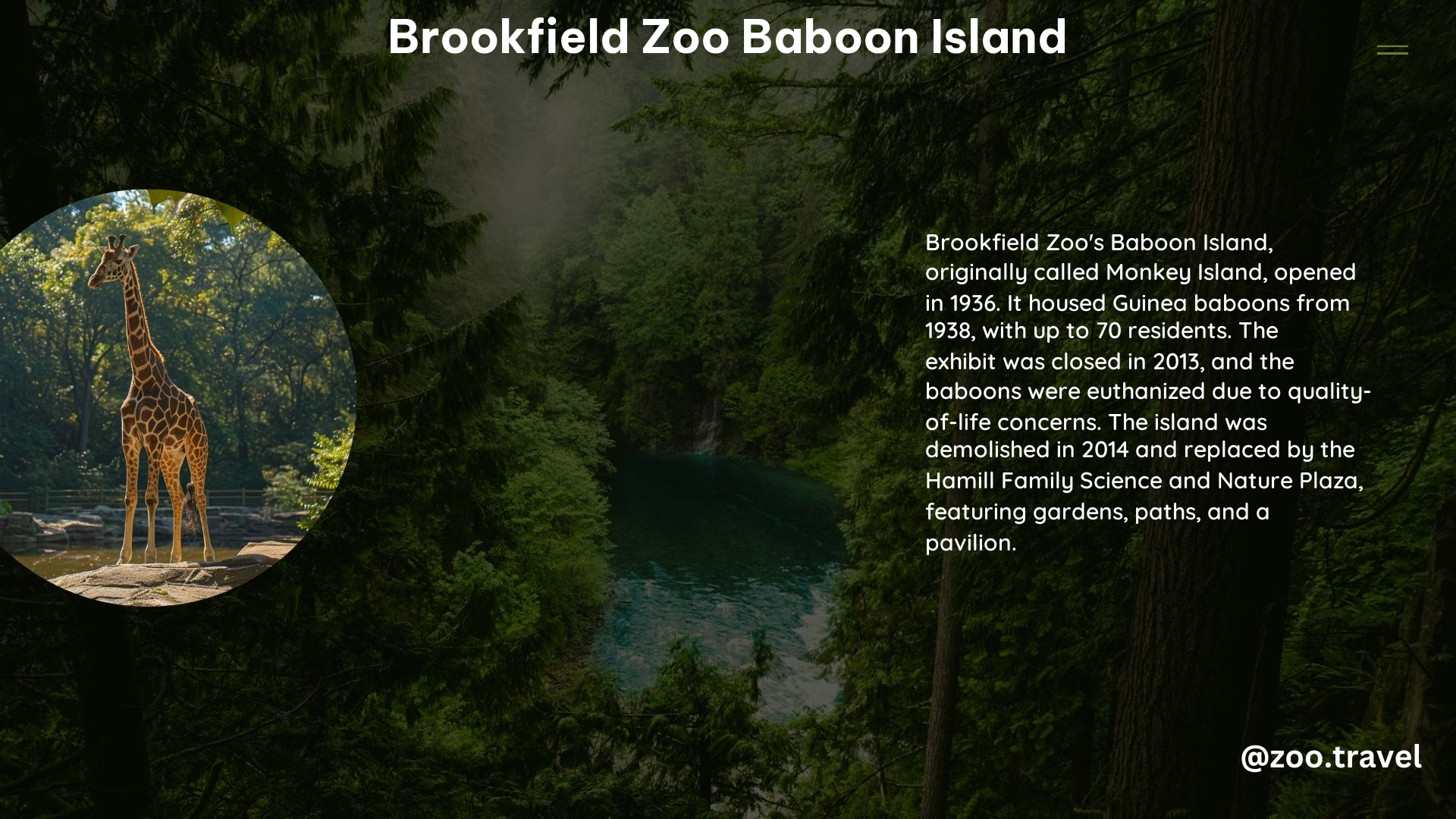Brookfield Zoo Baboon Island was a beloved and iconic exhibit that captivated visitors for decades. This unique primate enclosure was home to a thriving colony of Guinea baboons, offering a glimpse into the fascinating social dynamics and behaviors of these charismatic primates. From its opening in 1936 to its eventual closure in 2013, Baboon Island left an indelible mark on the zoo’s history and the memories of those who had the opportunity to witness its wonders.
The Rise of Baboon Island
Brookfield Zoo’s Baboon Island, originally known as Monkey Island, opened its doors in 1936. The exhibit was initially home to Rhesus monkeys, but over the years, it evolved to accommodate a variety of species, including Malay bears, antelope, meerkats, monitor lizards, and even Nile crocodiles for a brief period.
In 1938, the zoo introduced a new and captivating addition to the exhibit: Guinea baboons. These social primates quickly became the main attraction, drawing visitors in with their engaging behaviors and interactions.
The Baboons of Baboon Island

At its peak, Baboon Island was home to a thriving colony of up to 70 Guinea baboons. These intelligent and highly social animals were known for their complex social structures, with intricate hierarchies and strong family bonds. Visitors were often mesmerized by the baboons’ dynamic interactions, which included grooming, playing, and even occasional conflicts.
The baboons on Baboon Island were not just passive inhabitants; they actively engaged with their surroundings and the visitors who came to observe them. Zookeepers would often provide enrichment activities and opportunities for the baboons to explore and interact, further enhancing the visitor experience.
The Closure and Demolition of Baboon Island
In 2013, the Brookfield Zoo made the difficult decision to close Baboon Island due to the declining health and quality of life of the remaining baboons. The last of the baboons, ranging in age from 22 to 27 years old, were humanely euthanized, marking the end of an era for this iconic exhibit.
The demolition of Baboon Island followed in 2014, as the zoo made way for a new and exciting development. The site was filled in and covered with topsoil and grass, awaiting the next chapter in the zoo’s evolution.
The Hamill Family Science and Nature Plaza
In 2019, the Hamill Family Science and Nature Plaza opened on the former site of Baboon Island. This new attraction is a departure from the primate exhibit, focusing instead on science exploration and native prairie restoration. The plaza features gardens, paths, a pavilion, and picnic areas, providing visitors with a serene and educational experience.
While Baboon Island may no longer exist, its legacy lives on in the memories of those who had the privilege of witnessing the baboons’ captivating behaviors and interactions. The Hamill Family Science and Nature Plaza serves as a testament to the zoo’s commitment to innovation and the ongoing evolution of its exhibits.
Future Plans for Brookfield Zoo
As Brookfield Zoo continues to evolve, there are no specific plans to create a new exhibit for baboons or other primates in the former Baboon Island location. However, the zoo has undergone various changes and renovations over the years, including the opening of the Conservation Education Learning Center, a new reptile exhibit, and the Wild Encounters experience.
The future of Brookfield Zoo remains exciting, with the potential for new and innovative exhibits that will captivate visitors and continue the zoo’s legacy of conservation, education, and animal welfare.
Key Statistics and Figures
| Statistic | Value |
|---|---|
| Original Opening | 1936 |
| Closure | 2013 |
| Demolition | 2014 |
| Replacement Opening | 2019 |
| Peak Number of Baboons | 70 Guinea baboons |
| Age of Euthanized Baboons | 22 to 27 years old |
